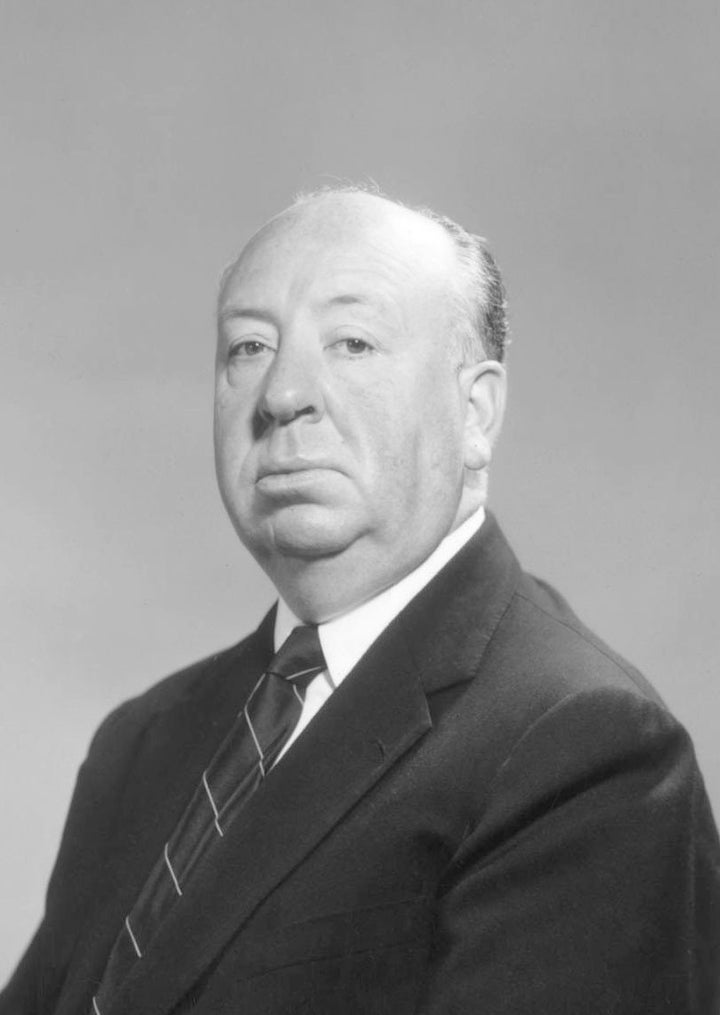
When I was a teenager, my dad, sister and I used to rent movies on the weekends. At one point, we got on an Alfred Hitchcock kick and each Friday we'd choose a different one to rent -- Psycho, Rear Window, Vertigo, and Frenzy, just to name a few. Hitchcock was a pro at triggering fear in me. As I watched, my heart would race, my breath became heavy and the palms of my hands would sting. And he didn't need 3D or other modern cinematic special effects to scare me, just a series of creative camera shots, erratic music, clever storylines and perhaps some chocolate syrup. It was almost as if he knew exactly how to use my own brain against me and that in and of itself was the ultimate "special effect." Hitchcock knew what would make people tick. How? Well, for one, my fright could have been activated in part by merely seeing the actors and actresses' eyes wide with fear on the screen.
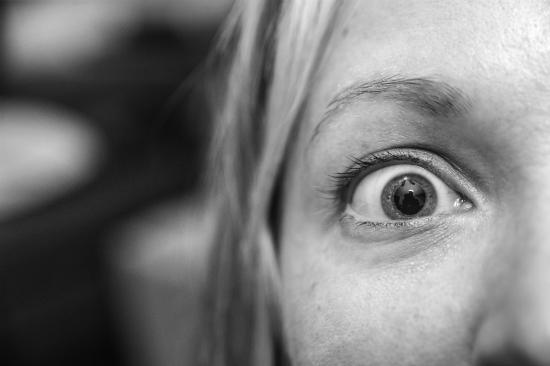
Eyes wide with fear
If we see someone whose eyes are wide with fear, it stimulates something inside of us. After all, if they are scared, maybe we should be as well. Perhaps they see some looming danger we don't. In the brain, our amygdalae read the frightful expressions on the faces of others and can use them as a cue to release hormones that heighten our levels of fear and aggression. Then our state of alertness and awareness to potential dangers surrounding us becomes elevated in an attempt to increase our chance for survival against an unseen threat. You can think of this cascade of fear triggered by someone else's as a "what was that!" response. If you are with a friend and they exclaim, "what was that!" and you see their eyes wide with fear, you might then feel your own heart begin to race and you might also become frightened having just witnessed their panic.
So why do the eyes open wide with fear? When someone is scared, their body immediately goes on high alert and prepares itself for battle by initiating the infamous "fight, flight or freeze" response. Their heart and respiratory rates increase, their eyes dilate, their eyelids raise and adrenaline is released. It has been hypothesized that their pupils dilate and their eyelids retract so that they can take in more visual information about the world around them. When the eyelids retract, there is an increase in the amount of eye white area visible. The expression "eyes wide with fear" exemplifies the appearance of someone who is scared, shocked, terrified or frightened with more of the whites of their eyes being exposed.
Studies have shown that when we observe a change in how wide open another person's eyes are, our own amygdalae become activated. One such fMRI study out of West Virginia University's School of Medicine was conducted measuring the activity of the right and left amygdala when participants witnessed a change to the visible sclera, or eye white area, of another person. The study went like this: 13 participants observed images of eyes that seemed to change expression. This dynamic change of expression was simulated by presenting a series of three pictures in rapid succession within a short period of time, 1,900 milliseconds.
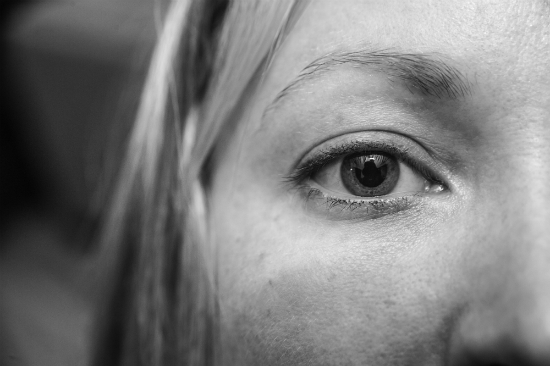
Eyes neutral
The eyes in the first and last images of the series depicted a neutral expression. The middle picture had either a decrease to their eye white area, which happens when faces take on a happy appearance (try smiling very big and you may notice your eyes squinting a bit), no change in eye white area (another neutral expression), or an increase to their eye white area (like when your eyelids retract when you are scared).
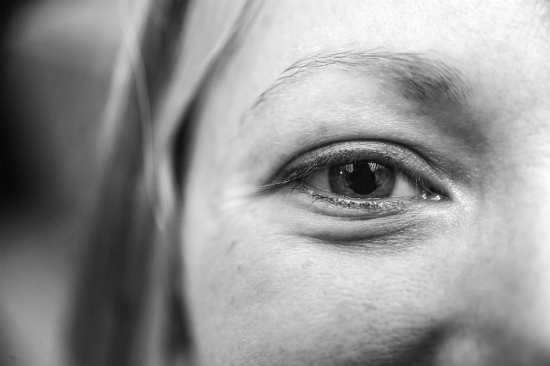
Eyes smiling
An increase in eye white area suggests a fearful expression. However, an increase in eye white area can also occur when the eyes quickly dart their direction of gaze to the side, like when we have suddenly picked up on a danger nearby and want to localize it and see exactly what kind of trouble we are dealing with.
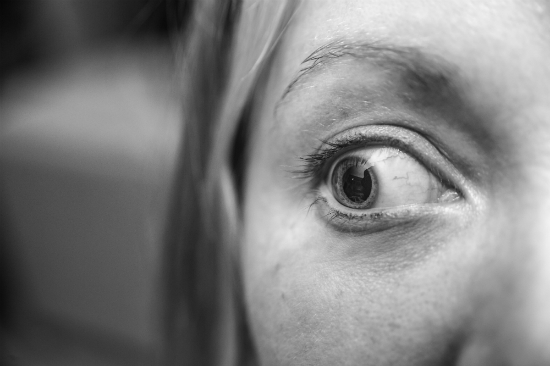
Eyes with gaze direction to the side
The pictures of the eyes were cropped in PhotoShop so that all facial features including eyebrows were taken away and only the eyes were seen in a rectangle against a black background. Luminance and contrast were controlled for and six different sets of eyes were used with gender and race represented equally. Each set of three pictures was presented in a rapid succession with the middle image being cropped so that it was slightly shifted upward or downward by a fraction of a degree, without moving the rectangle in the black background. This image shift gave the impression of motion so that the pictures of the eyes appeared almost animated to the observer.
The fMRI measurements revealed that the right amygdala responded to any change in visible amount of sclera, or eye white area, seen in others (either an increase or a decrease in how wide open the eyes are), while the left amygdala was more selective and only became activated when there was an increase in eye white area. It appears our left amygdala is analyzing the whites of the eyes of others and if we see more white, it can trigger our body to go on high alert and initiate our fear and "fight, flight or freeze" response.
There is much about the relationship between fear, the amygdala and the eyes that science has yet to uncover but perhaps this is one of the first clues to understanding the subconscious ways Hitchcock was able to "get in my head" to spook me. The "eyes wide open" look on the faces of his frightened characters, paired with blood-curdling screams and the dark overtures of erratic music and sounds were all ingredients to the recipe Alfred used to conjure up tension and a good scare inside of us.
Will scientists ever truly be able to say we understand all of the elements in his formula for fright? I wouldn't count on it, but as research continues, we'll keep our eyes peeled.
In a 1964 BBC television interview, Hitchcock was once asked, "Have you ever been tempted to make what is nowadays called a 'horror film,' which is different than a Hitchcock film?" To which he responds, "No, because it's too easy... visual horror like Frankenstein and that sort of thing, they are just props. I believe in putting the horror in the mind of the audience and not necessarily on the screen."
In the minds of the audience indeed, Mr. Hitchcock. Indeed.
If you would like to hear the genius of terror himself speak about the art of transfixing his audiences with fear, watch this clip from the 1964 interview:
Photo Credits: Full Circle Photography, Frank J. Padrone. Author pic by Erica Angiolillo